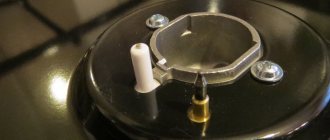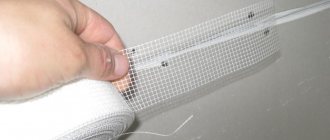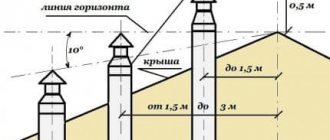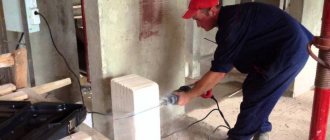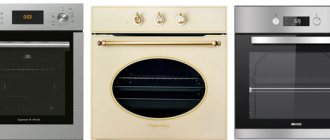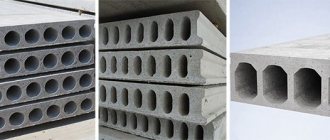Modern housewives who delight their families with healthy, tasty, baked dishes often use the oven for this. Today's ovens are very technologically advanced, one might even say smart. But no amount of equipment, even the most cutting-edge, will protect the innovative device from breakdowns and mechanical damage. Many owners of current ovens are faced with such a popular problem as the door not fitting tightly to the body of the device. This seemingly minor problem can later lead to serious problems with equipment, because hot air escapes, disrupting the heat distribution mode inside the unit. The quality of the prepared dish, its appearance and taste characteristics depend on the above. Everyone knows that in order for a sponge cake to turn out beautiful and “airy”, it is necessary that there are no sudden temperature changes inside the oven. And if the flap does not close or the door opens over time, the cake will not be tall and “lush.” The door of a properly functioning oven should fit snugly against its contour. If this does not happen, then hot air escapes during cooking. And this can lead to the fact that the facades of the furniture next to the oven will be damaged by steam.
Reasons for the oven door not closing completely
The problem of a non-closing sash can be caused by a number of reasons:
- The door has loose or initially had weak fastenings (curtains).
- The closing/opening mechanism has failed.
- The sash contour is heavily contaminated with grease and food particles.
- The door seal is worn.
- Mechanical damage directly to the device door itself.
Rules for operating gas ovens
When it comes to the rules for operating gas ovens, we usually think of the oven as a regular gas stove. In fact, the rules for using both a regular and an ultra-modern gas oven are approximately the same and include almost the same points.
Before use, excess appliances are removed from the oven (many people use this place as an additional cabinet for storing dishes and utensils);
The oven burner is ignited - first the gas supply is turned on with the handle, and after 1-2 seconds the electric ignition button is pressed. In models without a piezoelectric element, the operation is carried out in the reverse order - first, light a match and bring it to the burner, and only after that turn the gas supply knob.
After the burner is lit, without releasing the gas supply knob, the door closes. After 10-15 seconds, the presence of a flame on the burner is checked. After this you can release the handle. This is necessary so that the thermocouple reacts to the heat supply and does not block the safety valve.
After the burner is lit, the gas supply regulator knob is set to the required position indicating the temperature. Next, according to the operating instructions, the time required for the oven to reach the set temperature is recorded.
The prepared baked goods are placed on a baking sheet. The door is opened and, according to baking recommendations, the baking sheet is placed in the desired position in the oven. The door is closed and the cooking timer is set.
When baking flour products, you need to remember that you cannot open the door until the baking process is completed. Control can only be done through the door window. But when baking meat, poultry and fish, you can open the door, although the cooking time will be a little longer.
The operating instructions for the oven, in addition to the cooking times, also indicate the operating modes of auxiliary equipment - grill, fan, use of additional baking sheets and water containers. These recommendations cannot be ignored, since manufacturers, when developing models of equipment, conduct hundreds of tests to confirm the technology for preparing certain dishes. So, when preparing baked goods, the bottom burner of the oven is turned on in the initial period, the convection mode does not turn on immediately, but after a certain time, and the grill, to obtain a golden brown crust, turns on only after the bottom burner is turned off for only 2-4 minutes.
Don't solve the problem yourself, call a specialist
If you encounter a problem with the door not closing completely, you can contact the Mastersbyt oven repair service to troubleshoot the problem. When a technician arrives at your home, he will check the integrity and operational properties of the mechanisms that allow the door to open and close. Most likely, the sash will have to be disassembled and thoroughly cleaned of any debris, grease or food debris that has gotten inside. The oven doors have a seal around the perimeter that allows the door to fit tightly to the contour of the stove and which tends to deform and fall apart over time.
The specialists of our service center will cope with all these and other tasks with light hand movements. All of the above steps will be performed by a professional tool. If the equipment needs to replace components, our staff uses only original spare parts so as not to disturb the appearance of the device. In addition, eliminating such a common problem will not cost you a pretty penny, but will be quite inexpensive. The work will be done quickly, diligently and efficiently. You can learn in detail and thoroughly about the repair of various household appliances on this page.
Why does the oven door glass break?
Manufacturing defect.
A manufacturing defect or shock during transportation of the oven may cause glass to explode in the oven. For example, the glass used to make a door panel may have a manufacturing defect due to its special processing. Likewise, the oven could have been subjected to microshocks during transportation or during operation. Glass is indeed a brittle material that, after small, repeated impacts, can become deformed as the temperature rises. In this case, as a rule, the glass may explode the first time you use the pyrolysis function. This may happen later... We recommend being careful when using this oven cleaning for the first time and not remaining in the kitchen during the cycle. But again, this happens very rarely.
Useful information Glass is a material with memory. This means that when it receives a shock, it does not necessarily react immediately: it remembers the shock and may break later during normal use. The glass used for the oven door panel is considered tempered, meaning it has undergone a special treatment to cool quickly, making it more durable. First of all, it prevents the glass from breaking into a thousand pieces: the glass shards remain stuck together and fall straight away without breaking apart. This system is also used on car windshields to prevent broken glass from reaching passengers. Therefore, the risk of injury is very low, but not impossible.
Find out the conditions for preferential repairs and the amount of your discount
You can get acquainted with all the details of repairing your household appliances, the cost of services, as well as ongoing promotions, current discounts, and preferential offers on our main page.
Over the years, we have accumulated extensive experience in the field of repairing household appliances. MasterByt is a high quality of service provision and responsibility to our clients! Trust your equipment to professionals!
If the door of the electric stove does not close or does not lock and hold, then the reason may be either a breakdown of the locking mechanism or simple inattention. In any case, if problems arise with the door, we advise you not to experiment, but first read the material on this page. Most of the reasons that prevent the door from closing can be eliminated yourself, but it is better for a specialist to repair and adjust, for example, hinges.
An easy way to fix a door that won't close tightly
Some people believe that the easiest way to fix a door that won't close tightly is to hold it down with a brick. No: the easiest way to fix a door is to clean the gasket and door frame. You can do this by mixing a liter of warm water and a teaspoon of baking soda or liquid soap. Be sure to clean the area where the door meets the metal door frame of the refrigerator. You'll be surprised at how dirty it is (which no doubt affects how tightly the door seals against the refrigerator.
Wipe the seal and dry thoroughly with a dry cloth. If you find that there is caked-on dirt around the seal, allow the soapy water to soak into it for a few minutes. Once the dirt has absorbed the water, it will be much easier to wipe off (or at least with less effort).
If your refrigerator is many years old, then you need to lubricate the surface of the gasket. This can be done by applying a thin layer of Vaseline to the seal. Apply Vaseline before pre-cleaning the seal, then use a clean cloth or fingertips to apply a thin layer of lubricant to all parts of the seal.
If you think that replacing the door entirely would be easier, then reconsider fixing the problem yourself. A complete door installation can cost anywhere from a couple hundred dollars to over $1,000.
However, if your refrigerator is more than 8 years old, then problems with the seal will arise sooner or later.
Worn door hinges
Symptoms: the door feels a little loose to the touch
Over time, the door hinges wear out and are no longer able to hold the heavy oven door tightly against the frame. You can adjust the hinges using a regular screwdriver, but heavily worn hinges must be replaced. It should be taken into account that the door hinges are attached to the stove body itself, often with rivets: to replace the hinges yourself, you will have to almost completely disassemble the stove, so we recommend entrusting this work to a knowledgeable specialist.
The springs that tightly close the door may also weaken or break: you can try to tighten the springs, but the broken ones will have to be replaced.
Oven cleaning
Once a year, before the start of the heating season, the stoves need to be cleaned through special openings closed with bricks (without dressing) or small doors. Using a poker, soot and fly ash particles are removed through these holes. If possible, it is good to scrape the inner walls of the stove with a poker.
With proper combustion, virtually no soot is formed, and the furnace becomes clogged only with fly ash. But for prevention, it is useful to periodically heat the stove with aspen wood. Or, in an already heated oven, make the last load of firewood from aspen. Aspen and alder help burn out soot.
Compliance with these rules will save you time and firewood, and improve the local environmental situation.
The door is locked
Symptoms: Oven door won't open
First, you need to understand the reasons for the blocking: perhaps you yourself turned on the child lock or started the oven’s self-cleaning process - in the latter case, it is blocked until the end of the procedure.
To remove the blockage, it is usually enough to disconnect the stove from the power supply for 30-60 seconds. But modern stoves are so complex that you often need to follow a certain procedure to unlock the oven door - refer to the instructions.
The door may not open due to a breakdown of the lock or control module: in this case, you will have to call a technician.
Any household appliance breaks down periodically. Kitchen stoves did not escape this fate due to constant use. Problems with the oven door especially often arise, and most door breakdowns can be fixed with your own hands. The article describes in detail how to identify a breakdown, what are the causes of a breakdown, how to repair a part with your own hands, as well as expert advice and information on precautionary measures.
How can I clean the door and glass of the structure?
Not all cleaning products are suitable for oven glass. Powders can cause cracks. Therefore, it is better to make a solution. Using soda, you can prepare it yourself:
- Take a spray bottle and pour two glasses of warm water into it, add a little liquid soap. Mix the mixture with half a teaspoon of baking soda. Spray the liquid onto the glass. After 30-40 minutes, wash the glass in warm water.
- Take soda. Add a little water until the mixture is thick. Apply to dirty area. This method has a drawback - you have to wait several hours and only then wash the mixture off the glass.
- Take baking powder, which contains baking soda and citric acid. Sprinkle the mixture over the contaminated areas. Wait 1-2 hours. This cleaning method is very effective against grease. It begins to gather into small lumps that can be easily removed with a soapy rag or washcloth.
- Products containing alcohol are also suitable for cleaning.
- Vinegar effectively fights fat. Mix two tablespoons per liter of water.
Article on the topic: What cable cross-section is needed for a washing machine
Main symptoms of a malfunction
Any breakdown leads to the fact that the door no longer holds, locks or closes normally. The reasons for such malfunctions are different, but first it’s worth listing all the visible signs of the need for repairs:
- The door fits obliquely to the stove itself. This is a fairly rare case, but sometimes it happens that the door and even the stove itself can become warped if it is standing on an uneven surface. The curved one will have to be replaced, but the legs of the stove can be adjusted in height.
- Dangles or “walks” too freely. This occurs due to wear and tear on the hinges that hold the door in place. The screws on the hinges can be tightened with a regular screwdriver. Sometimes you have to take it apart to replace the hinges with new ones. The hinge device has springs that need to be tightened or replaced.
- It closes normally, but does not lock. The sign applies only to those slabs on which a locking lock is installed. If it wears out or breaks, you will have to install a new locking device.
- It closes poorly, and dirt is visible on its borders and the body of the stove. A trivial reason, but housewives rarely pay attention to the cleanliness of the area adjacent to the oven. The stove just needs to be thoroughly cleaned and washed.
- The rubber seal was deformed or roughened in some places. The rubber also wears out, and any roughness in the seal will result in the door not fitting tightly enough to the body. This seal will have to be replaced. The oven will close like new.
- The door has to be closed with force. The reason for this may also be the seal, which often jumps out of the special groove. You need to place the rubber gasket back into the gutter and make sure that it is securely fixed in place.
- You cannot close the door tightly because something is preventing it. If all the parts of the oven and the door are in order, then it is worth inspecting the seal. Perhaps some hard object accidentally fell inside it, which prevents a normal fit.
- Does not open. This sometimes happens on expensive multifunctional stoves. For example, the oven is blocked if you activate the child lock or set it to self-cleaning. Usually the door can be unlocked, but sometimes you have to follow a complex sequence of actions specified in the instructions for the stove.
Operating principle and first signs of failure
To correctly understand why the oven does not work, you need to understand on what principle it works.
The principle of operation of a gas oven
To turn on a modern gas oven, just press the ignition button.
Gas enters the burner, which from a spark forms a flame thanks to an automatic ignition device. The gas intensity can be controlled using the rotary knob. There is also a block for when gas does not flow if the fire goes out.
But your model may have another principle - manual ignition using matches.
When you see that the flame does not go out, you can adjust the temperature and wait until the oven heats up.
Signs that indicate that the oven in a gas stove is not working:
- Gas does not reach the burner.
- Food takes longer to prepare than usual.
- Food burns or remains raw.
- The flame goes out.
- The fire gets smaller for no reason.
Important!!! If your oven stops working due to a fire that suddenly goes out, check for a gas leak. You will most likely smell an unpleasant odor. If the cause is a leak, then you need to turn off the gas supply and call the service. A gas leak is life-threatening.
If the leak is not to blame, then you can try to fix the problem yourself.
Operating principle of an electric oven
The design of an electrical cabinet is similar to that of a gas cabinet. It is also designed for cooking.
Only the electric one has two heating elements made of durable steel. They are needed to maintain temperature and cook food evenly.
It happens that a model has more than two heating elements.
Moreover, if the electric oven does not work due to the failure of the heating element, then you need to find out which one you have, since they are different. This may be a difference in size, power, number of circuits, purpose.
Signs that indicate something is wrong with your oven:
- It won't turn on. And the backlight with indicators doesn't work either.
- Small heating with working lights and indicators.
- There is no heating at all, but the backlight and indicators work.
- The heaters turn off on their own.
Possible causes of failure
A broken oven door is a common problem.
Many reasons were discussed above when describing the visible signs of failure. The main reason is incorrect or careless operation.
- Sometimes heavy dishes are temporarily placed on an open door and children sit on it, which leads to excessive stress on the hinges and brackets. Deformed parts must be replaced.
- Problems sometimes arise due to loose fasteners or defects in the rubber seal. The fasteners can be tightened and the gasket replaced. On some stove models, you have to remove the door from its hinges to replace the seal.
- Sometimes repairs are necessary due to problems with the glass. It may crack or burst. Causes:
- manufacturing defects;
- damage during transportation and installation of the slab;
- temperature difference (heated oven and drops of cold water falling outside).
This leads to the formation of microscopic cracks; over time, the glass wears out more and more, and at a certain point it may finally crack.
The seal is worn out
Symptoms: in some places the seal is hard to the touch
Over time, rubber parts can wear out and harden, and the hardened parts of the seal will prevent the door from closing tightly. Such a seal can only be replaced, and it is better not to delay it, since the hot air escaping from the oven can damage other components of the stove or surrounding furniture.
Symptoms: you have to make an effort to close the door tightly
Over the course of long-term use, the seal may sometimes jump out of its original place, and this will prevent the door from closing tightly. You can easily correct it yourself: carefully insert the displaced parts of the seal into a special groove.
How to fix a problem with a gas or electric stove with your own hands?
Below are instructions for removing the door, dismantling the hinges and restoring the stove to its previous condition. The recommendations will be useful in case of serious problems with the door itself, glass or hinges.
Required Tools
For each specific case you will need different tools, but the general list will look like this:
- Phillips and regular screwdrivers;
- pliers;
- hammer;
- adhesive sealant for installing new glass;
- thick mittens or rubber gloves (depending on the type of breakdown).
Many plates are designed so that the door can be removed without tools, but tools may be necessary to repair other parts.
Removing the door and glass
Steps to remove the door from the oven:
- Open the door.
- Find the loops on the sides. Depending on the design of the slabs, they need to be bent or lifted and moved towards you.
- Smoothly pull horizontally towards you, and then vertically upward - it should detach from the body.
- Place the removed door on a flat and soft surface so as not to damage the glass. Please note that the door is heavy.
On some slab models, you must first remove the side parapets. You must open the hinged clamp lever and then close the door until it locks the hinges. Then it is removed, the sides are removed and access is gained to the brackets that hold the door against the slab.
Removal process
- Why might you need to remove the door?
- Removal process
- Removing glass
- How to remove the hinges?
- How can I clean the door and glass of the structure?
- Precautionary measures
- Conclusion.
- Open the oven door.
- Find the loops. These are the fastenings. There are handles on them. They need to be lifted and moved towards you.
- Grab the door, point it up and pull horizontally to release it from the body. It is quite heavy, so you should be careful not to drop it.
- The door has been removed. Then place it on a soft, flat surface to avoid damage and scratches.
- You can start disassembling the door.
Attaching the door to the oven
Precautionary measures
Do-it-yourself repairs can be difficult, so you need to adhere to the following recommendations:
- Carefully remove the door. It is heavy, so it is better to remove it with two people.
- Handle the removed glass carefully as it may slip out of your hands.
- Be careful with fasteners and brackets, as they can be damaged if not handled correctly.
- Do not use powders or strong chemicals to clean glass.
- Wear thick gloves when working with glass, and rubber gloves when cleaning.
Problem adjusting oven temperature.
If your oven heats up too quickly during pyrolysis and the oven has not been placed in a safe position, it can cause the glass to warp and possibly cause it to explode. Rarely happens and it's really bad luck!
Faulty temperature probe. A temperature probe is only present in an electronically controlled oven : it tells the electronic board whether the temperature has been reached or not. If the temperature sensor is faulty, it can send inconsistent electrical signals to the electronic board and therefore to various oven components. This may cause excessive heat. You can check the condition of the sensor using a multimeter in the “Ohmmeter” position or invite a technician.
Expert advice
On some slab models, the glass is glued to the sealant. In such situations, the glass is removed if its integrity is damaged. You will have to clean it along with the door itself. Of course, such a door can also be disassembled and new glass glued, but this requires special glue intended for repairing household appliances.
When replacing an old seal, you need to clean the groove in which it was located, and only then insert a new rubber gasket.
In order for the stove to serve you as long as possible, it must be used carefully. Do not open the oven forcibly. After each preparation of food, it should be washed without waiting for a large accumulation of debris.
Housewives often complain about problems with the oven door: for some reason it does not close well, which interferes with the normal operation of the stove and high-quality cooking. Most problems can be fixed on your own, even if you have to remove the door and disassemble its fastenings.
How to remove the hinges?
Loops need to be removed in two cases:
- The door opens too hard.
- The door does not close completely.
The hinges are removed in the same way as when removing the door. But you will have to unscrew a few additional fasteners. During execution, the structure will be divided into several parts. One of them contains loops.
Article on the topic: Why does a Samsung TV turn on and off on its own?
The oven may not open or close properly for the following reasons:
- The hinges are clogged or broken.
- The spring is too compressed or stretched.
- Too much debris accumulation.
For Bosch ovens, the spring is installed on both sides.
To avoid breaking hinges when cleaning doors, you must follow these rules:
- You need to unscrew and remove the hinges slowly, because if you do not calculate the force, the parts may break.
- Before removing the hinges, make sure that all screws have been removed. If only one remains, the fasteners may bend, and then you will have to change them.
- Do not use force to separate doors or glass. Companies make ovens so that all its parts can be removed without problems. If you feel resistance, you are most likely doing something wrong.

